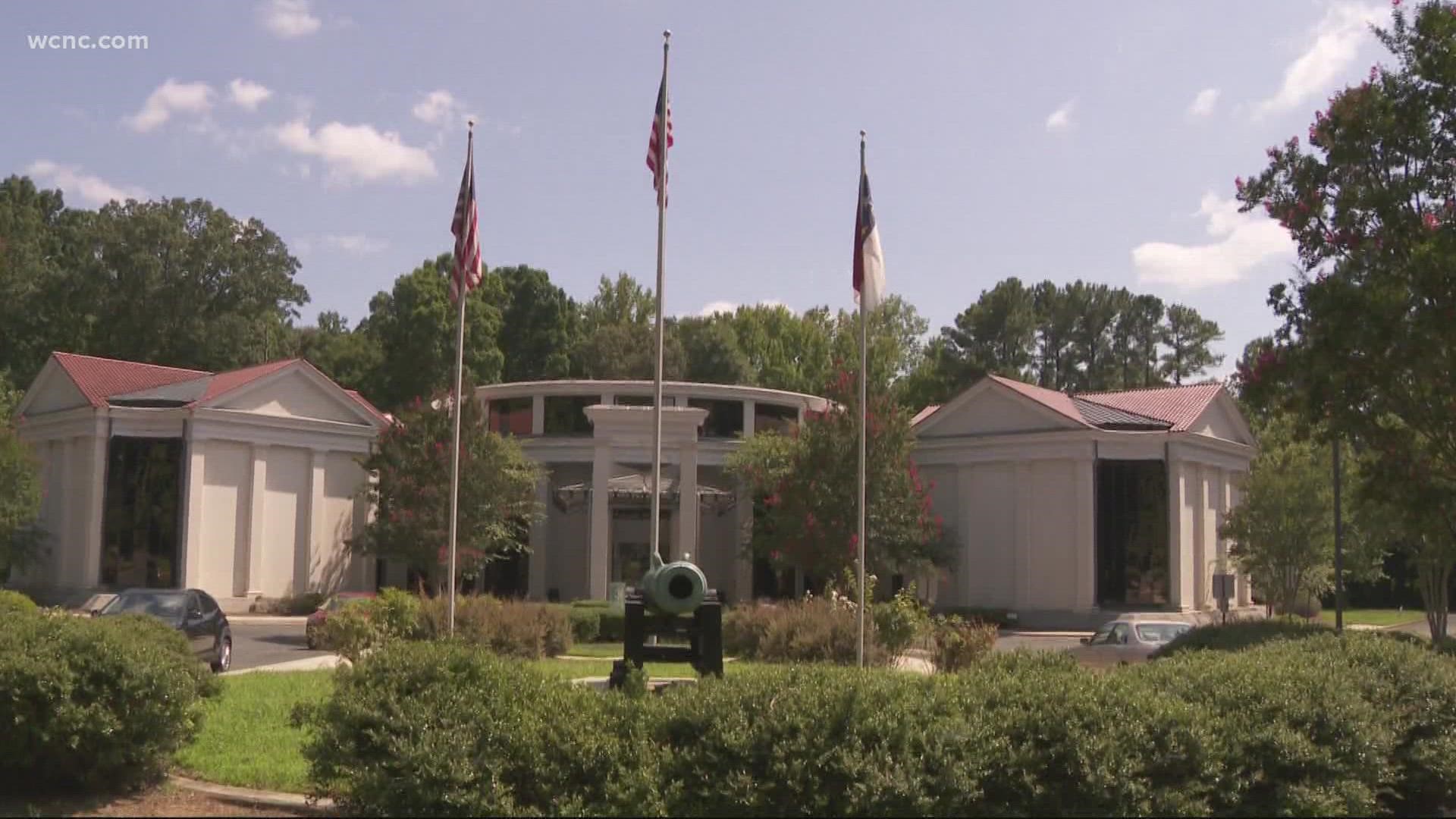CHARLOTTE, N.C. — The Charlotte Museum of History is a hidden gem nestled on eight wooded acres on the city's east side that's easily missed if someone doesn't look closely.
One of the core resources interpreted on the museum's campus is the 1774 Hezekiah Alexander Rock House. The home is listed on the National Register of Historic Places and sits in its original location, making it the oldest surviving home in Mecklenburg County. Alexander was an original signer of North Carolina's constitution and, according to the museum's leadership, lived in the home with his family and at least 17 slaves.
"We've had a bronze statue of Hezekiah for many years that his descendants put together to represent his history," Charlotte Museum of History President and CEO Adria Focht said. "Unfortunately, most of what we know about the people who were enslaved here was written by their enslavers, so we are seeing it from one perspective."
That limited perspective is why museum curators are excited about a recent portrait of "Nance" that was interpreted by a Charlotte-based artist. Nance was a mother who was enslaved on the plantation.
"...to give her a face to give her presence in the space when really all we know about her is her name and a few tidbits," Focht explained.
In recent years, the museum has intentionally focused on as many previously unheard voices as possible to give more context to Charlotte's history. A Catawba Indian pottery and oral exhibit highlight two of the longest-standing cultures in the state's piedmont and mountain regions. The museum is using the project to specifically elevate the presence of indigenous peoples and their places in North Carolina history.
"To be able to give voice to the voiceless, to be able to tell the stories of people who were part of Charlotte's history, I think is so important," Focht said.
The museum's latest effort is a fundraiser to restore one of the county's oldest African American schoolhouses, known as the Siloam School, and relocate it to the east Charlotte campus.
The City of Charlotte and Mecklenburg County are committing a combined $160,000 toward the fundraiser to relocate and save the school, getting the museum much closer to its $1 million goal. The City of Charlotte's $10,000 contribution will be paid over the fiscal year, while Mecklenburg County has committed to $15,000 each year for the next 10 years.
"We talk about the Civil War, we talk about civil rights, but there's a big gap and a long march between those events in our history here in Mecklenburg County that we hope to be able to share," Focht said.
Currently, only a photography exhibit depicts the Jim Crow-era school, but in the near future, museum curators hope the restored building will add depth to an observer's understanding of what it was like for kids who attended classes.
Contact Fred Shropshire at fred@wcnc.com and follow him on Facebook, Instagram and Twitter.

